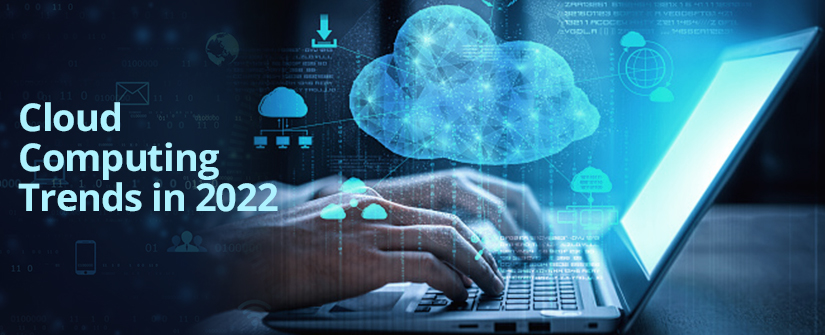History
The global environment has recently changed in many ways, from the pandemic to international supply chains issues, ASA consequence, acceptance and use of cloud computing technologies has accelerated the current scope of opportunity as and when required.
As ecommerce has improved, use of the cloud as a necessary business service is gaining ever more popularity, primarily because it’s easy to use, flexible, and offers a wide range of applications.
Objective
Cloud technologies continue to upgrade, and more organizations are making use of cloud-based services. Some of the primary cloud computing trends to engineering colleges can guide the students which are moving to adopt the latest trends in cloud computing.
- E-Commerce
- Digital Transformation
- Cloud Automation
- Edge Computing
- Artificial Intelligence
Latest Cloud Computing Trends
Ecommerce
In today’s Era, one of the most significant ways to access the cloud is through the use of cloud services. According to a recent survey, online shopping has increased the use of public clouds by a variety of businesses.
Because of the COVID, E-commerce has experienced an impressive increase of new clients and productivity. Goods and services purchases online became a necessity for many as they don’t want to have any contact with people they weren’t living with. People are sensible for their health, but still need items available online. One of the easiest ways to provide clients with online products is through use of the cloud by software engineers. Hence, cloud computing courses in Nashik focus on skill-based training to help software engineers analytically approach such issues in their career.
Software as a Service (SaaS) is considered the most result oriented service the cloud has available. Competition between SaaS clouds has resulted in a wide range of software solutions. The advantages of this service typically include low TCO (Total Cost of Ownership), a quick and easy configuration, scalability, and that it is normally user-friendly, there are low upfront charges.
Platform as a Service (PaaS) having both hardware and software tools. Typically, businesses select this service as an easy way to modernize their old systems with cloud-native capabilities. Use of this service is also supported by the needs of remote workstations requiring access to a content-rich, high performance, infrastructure to do their work.
Digital Transformation
The cloud can help significantly with digital transformation. Digital transformation uses the latest Digital technologies to structure a business and its culture. During this transformation the organization as a complete and various processes within it, should become more efficient. Technology is used to replace an existing traditional service, but the goal is not to simply replace the process with modern technology, it is to make the process more secure and efficient and user-friendly.
Open Source Cloud Applications
Many businesses are being trapped into using a single cloud, because of vendor lock-in. Vendor lock-in has become a problem for businesses using proprietary DB, platforms or software, and in response, they are using open-source cloud applications. The strongest motivation for moving to an open-source host was low cost. Many organizations find it preferable to use open-source solutions.
Cloud Automation
Automating the cloud helps to exclude both repetitive and manual operations and the errors that come with manual labor. Cloud offers new ways to organize, visualize, and analyze data. Cloud automation tools help the cloud’s infrastructure to the fullest. Dashboards are commonly used with cloud automation, which can be useful to both Students (UG and PG) and research fellows.
Edge Computing
Edge computing is a cloud trend, with the cloud acting as a hub and localized data centers as the outer end with connected devices and IoT connections continuing to gain popularity, Modern edge computing has become an essential component for these technologies. Intelligent technologies, such as artificial intelligence and robotics, require greater speed and processing power. Artificial intelligence courses in Nashik generally include Edge computing to provide solutions for taking advantage of these advancements.
Artificial intelligence
It now depends on the cloud while it makes decisions that manage data, provides analytics and optimizes workflows, cloud computing supports artificial intelligence as it interacts with humans. Artificial intelligence and the cloud mostly run parallel with both benefiting and building off one another. The cloud provides less upfront charges, reliable solutions to traditional hardware and software. AI, in turn, helps the cloud to structure data, develop and offer ultimately for decision making. There is a huge demand for qualified and skilled artificial intelligence software engineers in the industry. Many engineering colleges in Maharashtra offer cutting-edge artificial intelligence programs to help meet industry demands.
Conclusion
According to cloud based models SaaS, PaaS and IaaS for deploying applications, Virtual Machine’s and IT Infrastructure. Engineering students can deploy their projects on cloud and be part of the latest cutting edge technologies. Top software engineering courses after 12th focus on value addition in their skill set along with programming languages, Networking, Security etc.
There is various significance of using cloud environment as follows-
- Data Policy
- Security
- Quality Assurance
- CICD Pipeline
- Server less Computing (E.g. AWS Lambda)

